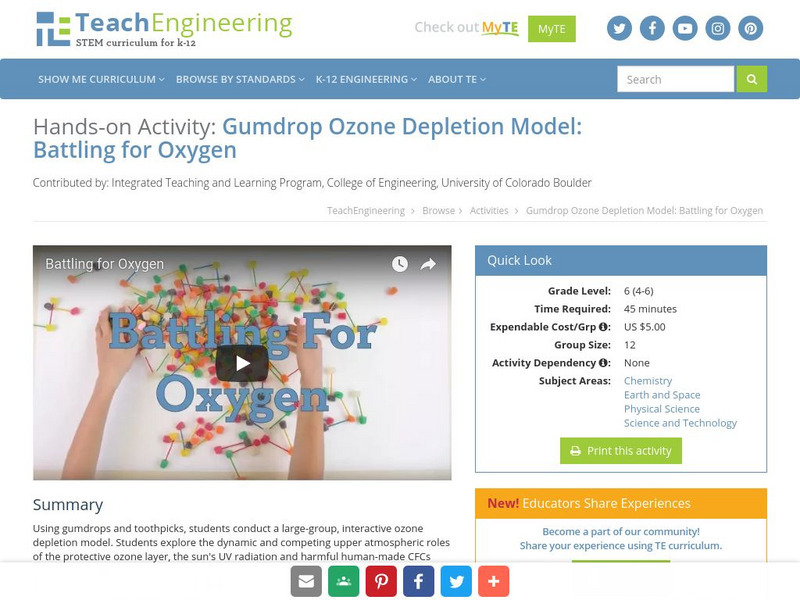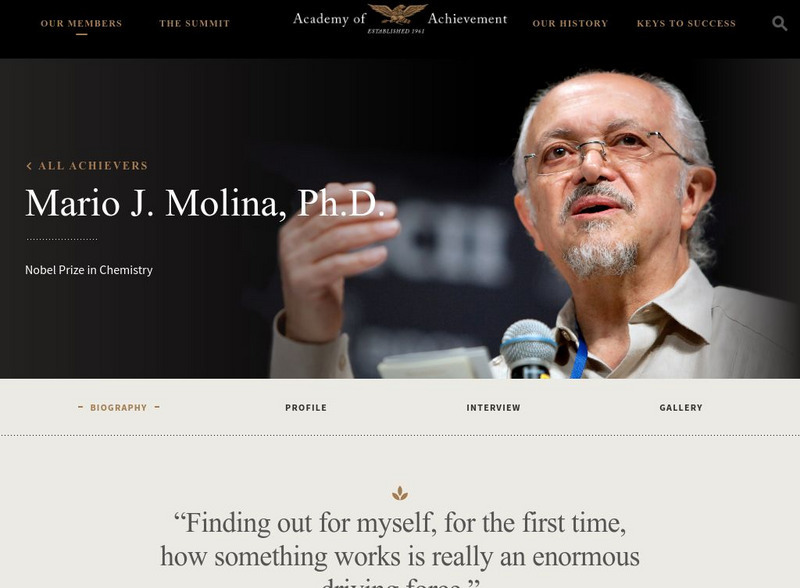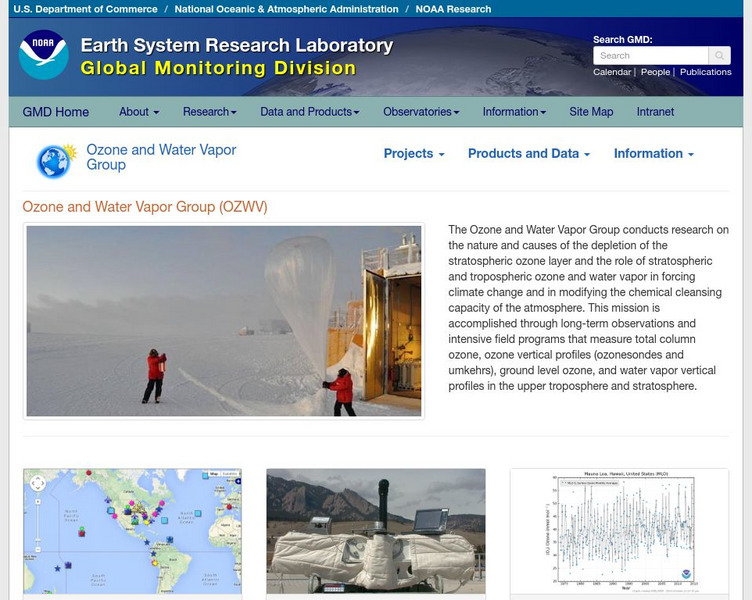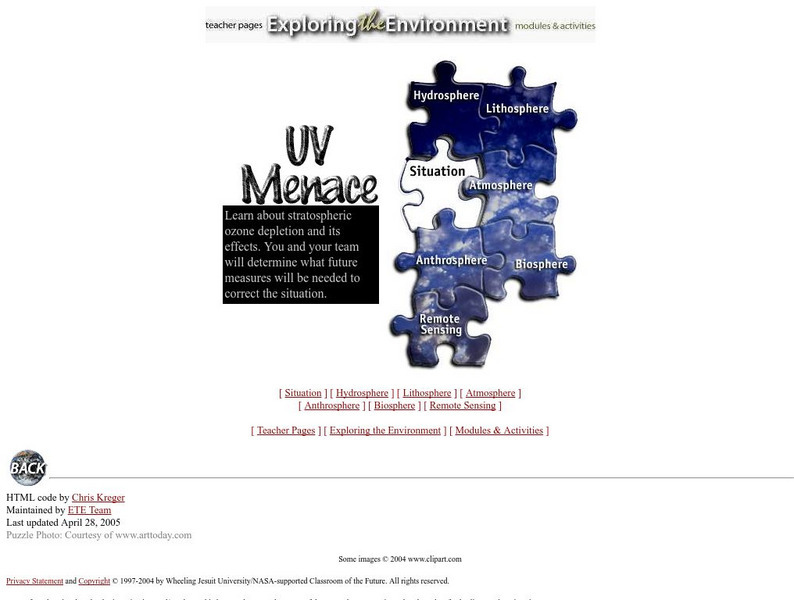Hi, what do you want to do?
American Chemical Society
Chlorofluorocarbons and Ozone Depletion
The best of intentions can have negative results. Learners explore the history of the use of chlorofluorocarbons and their effects on the ozone layer. They discover how widely the compound was used because of its unique chemical...
College Board
1999 AP® Environmental Science Free-Response Questions
Pollution is a real concern in most areas of Earth. A four-question AP® assessment has learners analyze data related to water pollution and air pollution as well as consider the pros and cons of recycling. Each question has several...
College Board
2007 AP® Environmental Science Free-Response Questions
Mother Nature may have less control of temperature than you think! Young scholars consider the effect urban environments have on local and surrounding temperatures as they respond to one of four free-response assessment questions from...
Polar Trec
Ozone Data Comparison over the South Pole
Did you know the hole in the ozone is seasonal and filled by January every year? The lesson plan uses scientific measurements of the ozone over the South Pole to understand patterns. Scholars learn that the hole grew bigger annually...
Laboratory for Atmospheric and Space Physics
Polar Vortex Interactive
An interactive lesson places pupils as scientists who must learn why the ozone layer is being destroyed by analyzing the data from multiple satellites. The first analysis shows how UV is related to the ozone cycle. The second...
National Institute of Open Schooling
Air Pollution
Seventy percent of the air pollution in China is due to car exhaust. Under the umbrella of environmental chemistry, learners extensively explore air pollution. From the makeup of our atmosphere to sources of major air pollutants, classes...
Texas Commission on Environmental Quality
Environmental Sciences
Whether you are teaching environmental science in junior high or studying recycling in kindergarten, there is something for all in this set of lessons designed for environmental education. The 110-page packet comes with tips for...
Curated OER
AP: Chapter 54: Ecosystems
A lot of learning is packed into these 23 questions about ecosystems. Advanced biology classes apply their knowledge of communities, productivity, biogeochemical cycles, and human impact on the environment by writing short answers for...
Curated OER
Effects of Ozone Depletion
Explore the causes of ozone depletion and the effect on plankton, algae, plants, amphibians, and humans. Learn how the Montreal Protocol has possibly helped reverse the decline of the ozone layer. Warning: photos of skin and eye...
Curated OER
UV light & Ozone layer
Middle-school meteorologists absorb information about ultraviolet radiaton and consider the ozone layer. The book that learners are supposed to refer to is not available, so you might want to locate some graphics or posters...
Curated OER
Standard 4 Review-Human Impact
In this human impact on the environment worksheet, high schoolers fill in the blanks to complete sentences about how humans have negatively affected the environment. They complete sentences about the actions taken to reduce and repair...
Curated OER
The Ozone Layer
Students examine the issue of ozone depletion. They define key vocabulary terms, take a pre-quiz, discuss the quiz questions and answers, read an article, and answer discussion questions.
Curated OER
Natural Resources: Getting a Fair Share?
Students explore the impact of human behavior on key components of the environment, examine how theirn own personal decisions have added to the problem, and explore possible solutions to the current ecological crisis.
Carnegie Mellon University
Chem Collective: Ozone: A Scenario Based Activity in Kinetics
Students use kinetics to interpret raw experimental data to determine the mechanism of ozone destruction. In this pen and pencil activity, students are given data obtained from laboratory experiments to study the ozone depletion reaction.
Encyclopedia of Earth
Encyclopedia of Earth: Physics & Chemistry: Halocarbon
Article explaining what halocarbons are, where they occur in nature as well as man-made sources, how they are used, and their negative environmental impact. (Published: October 28, 2011)
Other
Cambridge University: Atmospheric Chemistry Research Group: The Ozone Hole Tour
This resource gives information about the ozone hole over Antarctica. There are movies, virtual reality models, explanations and photographs. QuickTime plug-in optional.
TeachEngineering
Teach Engineering: Battling for Oxygen
Using gumdrops and toothpicks, students conduct a large-group, interactive ozone depletion model. Students explore the dynamic and competing upper atmospheric roles of the protective ozone layer, the sun's UV radiation and harmful...
American Academy of Achievement
Academy of Achievement: Mario J. Molina, ph.d.
Read about the life of Mario J. Molina, winner of the Nobel Prize in Chemistry for discovering the danger that chlorofluorocarbons presented to the Earth's ozone layer long before anyone else recognized it. Includes a profile, videos,...
NOAA
Noaa: Cmdl: Ozone and Water Vapor Group
The Ozone and Water Vapor Group conducts research on the nature and causes of the depletion of the stratospheric ozone layer and the role of stratospheric and tropospheric ozone and water vapor in forcing climate change.
TeachEngineering
Teach Engineering: Sensing Air Pollution
Students learn about electricity and air pollution while building devices to measure volatile organic compounds (VOC) by attaching VOC sensors to prototyping boards. In the second part of the activity, students evaluate the impact of...
Other
Centre for Atmospheric Science: Ozone Hole Tour
Deals with ozone hole and related atmospheric issues and research. Has a multimedia tour of the ozone hole and many related links.
NASA
Nasa: Ozone Hole Watch
You may have heard of CFCs and how harmful they can be to the ozone layer, but do you know the process that chlorine undergoes to contribute to this destruction? NASA explores this topic and has charted the depletion of the ozone since...
Center for Educational Technologies
Nasa Classroom of the Future: Environment Module: Uv Menace
This site provides information and activities for classes to learn more about ozone depletion and UV radiation.
European Union
Environment for Young Europeans: Air
Part of a larger site on the environment in general, the site concentrates on air, air pollution, and climate change. From the European Union.


























